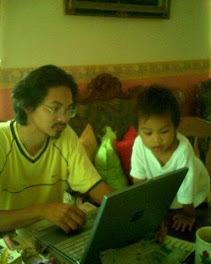1. Lets suppose you flip a coin 3 times. You might get 3 tails on a row, or 3 heads on a row, according to probability laws it is possible and it can happen very ofter. But if you flip a coin 100 times, there is a VERY (and i mean VERY) small chance of getting 100 tails of 100 heads in a row. You'll most likely get around 50 tails and 50 heads. So, there is no way to predict this, it's pure luck. I have made a computer simulation of this, 1 for tail, 0 for head, numbers are being randomly generated. Here is the result:
001110001111101010001100110011111010010100100000101
011110001010100111001010000001001000000111101010
2. Lets now flip a coin 300 times. The result looks like this:
111000000000001000010011010010000100111010101111101
100110011011001001010000101101110000000000100010100
111111111111010011010001011001001111100010100010111
1101001011000000101000110100011011000100011010000100
1101110010100111110011101110110010111100100110001110
0000010110101010111111000111110000111000110
Please note that at the beginning we have a row of 11 zeros (heads). After the first 3 flips, one might say: "Enough heads, it's time for me to bet on tail". But no..head comes up again. After 5 or 6 consecutive losses one might say: "6 loses in a row? The next one must definitely be a tail". But he/she looses again, because the coin does not have memory, each event (flip) is independent. Pure chaos, we know that on a long term we have around 50% chances of getting a head or a tail, but on a short term, no one can predict the result. Thats exactly my point. Consider this while reading this tutorial further.
Here is another situation: we have 100 people, each one of them have a ball. The ball must be thrown in a basket daily. When the ball is thrown in the basket, we write down the time. We do this, every day, 10 days in a row. After 10 days, we gather and analyze the results. The examiner might notice that most of the balls were thrown in the basket around, lets say 13.00 PM. So we might say that the next day, most of the balls will be thrown around same hour. This is an example of a predictible event. The conclusion is that everything that depends on humain behaviour CAN sometimes be predicted.
Lets go back to our trend:
1. Do not apply technical analisys to a small timeframe, because no one can predict the trend on a small timeframe, things are quite chaotic there (the volatility is random). Pivot points, resistance and support levels, chart patterns are useless there. We can improve our odds on small timeframes, but wel'll see how on another tutorial.
2. Pay attention to support and resistance points, but also to price momentum (wait for the price momentum to change, do not suppose it will happen, because sometimes price can break the support/ resistance levels).
3. Choose a pair and stick to it, watch its timeframes, write down hign and low daily points and the time when that happened, so one can predict the values for the next day. Watch carefully the support/resistance levels, see if the limits are being broken, how, what conditions, etc. Some pairs are more predictable than others.
4. Use as many indicators as you can for a timerame
5. In our first example we saw that results can be predicted on a longer timeframe, but not on a smaller one. Use weekly support/resistance levels in order to get more accurate results.source: fxpalace.com








No comments:
Post a Comment